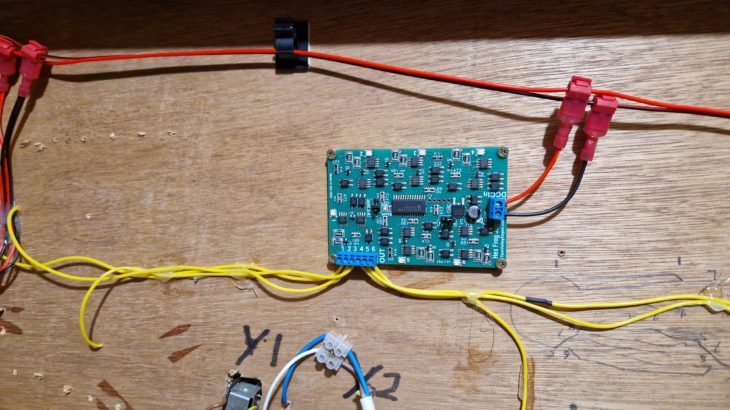I noticed when I was poking around the layout with the multimeter that the frogs and switchrails weren’t carrying any power. This is usually fixed simply by cleaning the track, mainly between the rails and the switchrails, but for whatever reason I couldn’t get it clean enough to be reliable. I don’t know how old this layout is, so for all I know there could be years of dirt built up on there. Sow how do we fix this?
Enter: the frog juicer.
I have called the layout “Rhad Valley” as I wanted to keep everything as cheap as possible to show what can be achieved without spending too much money. This unfortunately is where I had to ignore that rule; the layout simply wouldn’t work without power to the frogs so money had to be spent (sad face). The scenic side of the layout has 6 points with electrofrogs, so the “cheapest” option was to buy the Hex Juicer from Tam Valley Depot – I say “cheapest” in quotes as it was still £81.50 which is over 3/4 of what I paid for the layout! That being said, at £13.58 per frog, it was the best of a bad bunch.
Installing the juicer was rediculously easy though – connect the two terminals to the DCC bus wires and the remaining terminals to the frogs and you’re good to go.
To test the installation, rather than poking around with a multimeter again, I connected up a Hornby Elite controller and did a real life test with a Dapol Class 27 loco – this was a milestone for a couple of reasons; the main one being this was the first time a loco had run on the layout! The second is that it proved the frog juicer worked flawlessly; even at a crawl the loco was able to traverse the points without issue.
That was easy, but not “rhad”
